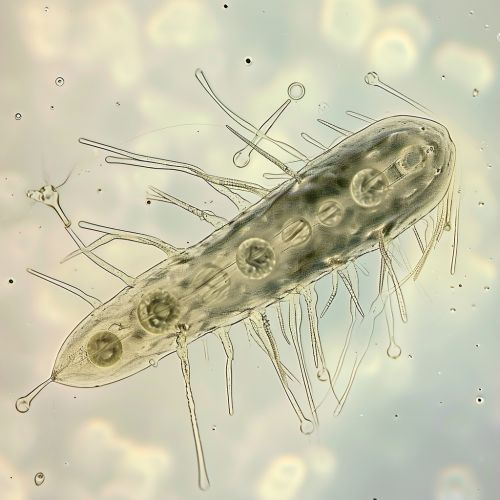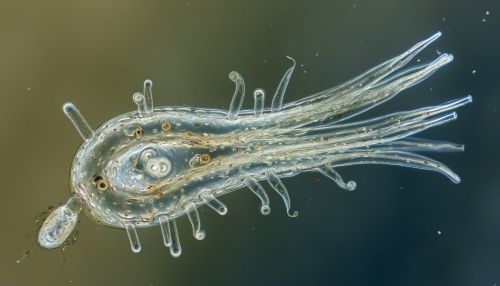Parabasalia
Introduction
Parabasalia is a group of protists that belongs to the supergroup Excavata. They are primarily known for their unique cellular structures and their symbiotic relationships with various organisms, including termites and cockroaches. Parabasalia are characterized by the presence of parabasal bodies, which are associated with the Golgi apparatus.
Classification
Parabasalia belong to the phylum Parabasalia, under the supergroup Excavata. The classification of Parabasalia has been a subject of debate among scientists due to their unique cellular structures and diverse range of hosts. However, they are generally classified into three main orders: Trichomonadida, Hypermastigida, and Cristamonadida.
Morphology
Parabasalia are unicellular organisms with a unique cellular structure. They possess a single nucleus and a parabasal body, which is a distinctive feature of this group. The parabasal body is a complex structure associated with the Golgi apparatus and is involved in protein processing and secretion. Parabasalia also have a unique flagellar apparatus, with multiple flagella emerging from a basal body.


Life Cycle
The life cycle of Parabasalia is complex and varies among different species. Some species have a simple life cycle with a single host, while others have a more complex life cycle involving multiple hosts. The life cycle typically involves a trophozoite stage, where the organism is actively feeding and reproducing, and a cyst stage, where the organism is dormant.
Ecology
Parabasalia are found in a wide range of environments, but they are most commonly associated with the digestive tracts of insects, particularly termites and cockroaches. They play a crucial role in the digestion of cellulose in these insects, making them an essential part of the insect's digestive system. Some species of Parabasalia are also known to cause diseases in humans and other animals.
Symbiotic Relationships
Parabasalia have a symbiotic relationship with their hosts. In termites and cockroaches, they aid in the digestion of cellulose, a complex carbohydrate that the insects cannot digest on their own. In return, the Parabasalia receive a safe environment and nutrients from the host. This symbiotic relationship is crucial for the survival of both the host and the Parabasalia.
Pathogenicity
While many species of Parabasalia are harmless symbionts, some are known to cause diseases in humans and other animals. The most well-known pathogenic Parabasalia is Trichomonas vaginalis, which causes trichomoniasis, a common sexually transmitted infection in humans.
Research and Studies
Parabasalia have been the subject of numerous scientific studies due to their unique cellular structures and their symbiotic relationships with insects. These studies have provided valuable insights into the evolution of eukaryotic cells and the mechanisms of symbiosis.
